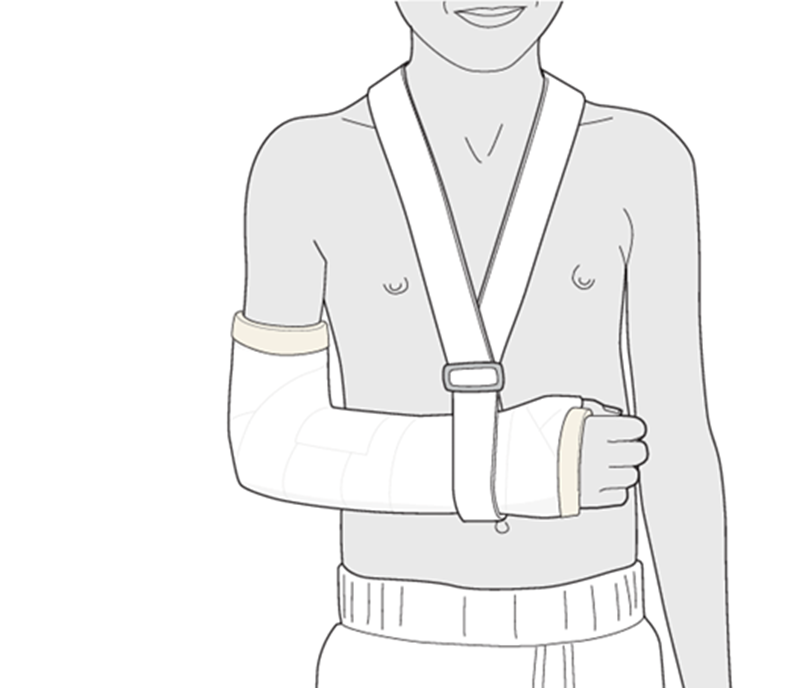A nurse is collecting data from a client who had a long arm cast applied 2 hr. ago. Which of the following findings of the affected extremity should the nurse report to the provider immediately?
The client's fingers are cool to the touch.
The client reports severe itching under the cast.
The client's capillary refill is 3 seconds.
The client reports increased pain at the area of the fracture.
The Correct Answer is A
Choice A Reason:
The client's fingers are cool to the touch is correct. Coolness of the fingers within a short time after a cast application can indicate compromised circulation or potential compartment syndrome, which requires urgent attention to prevent tissue damage or loss of function. It suggests impaired blood flow to the fingers, which is a serious concern requiring immediate evaluation by the provider.
Choice B Reason:
The client reports severe itching under the cast is incorrect. While itching can be uncomfortable, it might not pose an immediate threat. Itching can commonly occur as the skin heals and can be managed through non-invasive means.
Choice C Reason:
The client's capillary refill is 3 seconds is incorrect. A capillary refill of 3 seconds is slightly prolonged but doesn't typically indicates an immediate emergency. However, if this finding worsens or if combined with other concerning symptoms, it might warrant further assessment.
Choice D Reason:
The client reports increased pain at the area of the fracture is incorrect. Increased pain after a cast application can be expected initially, especially within 2 hours of the procedure. However, persistent or severe pain could indicate issues like poor alignment, swelling, or other complications. While it's important to address pain, it might not require immediate reporting unless accompanied by other concerning symptoms.

Nursing Test Bank
Naxlex Comprehensive Predictor Exams
Related Questions
Correct Answer is D
Explanation
Choice A Reason:
Age 45 years is incorrect. While age is a significant factor in osteoporosis risk, 45 years old isn't inherently considered a high-risk age for developing osteoporosis. However, bone density tends to decrease gradually with age, and after menopause in women, there's a more significant decline due to hormonal changes.
Choice B Reason:
Regular aerobic exercise is incorrect. Regular exercise, particularly weight-bearing and muscle-strengthening activities, is typically beneficial for bone health. It can help maintain or improve bone density and strength, reducing the risk of osteoporosis. Therefore, regular aerobic exercise is generally considered a protective factor against osteoporosis, rather than a risk factor.
Choice C Reason:
Uses NSAIDs for pain relief is incorrect. While long-term use of certain medications, such as glucocorticoids (steroids), can increase the risk of osteoporosis due to their impact on bone density, the use of NSAIDs (nonsteroidal anti-inflammatory drugs) for pain relief isn't directly linked to osteoporosis as a significant risk factor. However, chronic use of certain medications might have implications for bone health and should be assessed on an individual basis.
Choice D Reason:
Smoking is a known risk factor for osteoporosis. It can have detrimental effects on bone health by interfering with the body's ability to absorb calcium, decreasing estrogen levels, and impairing bone-forming cells. Consequently, smokers have a higher risk of developing osteoporosis compared to non-smokers.
Correct Answer is D
Explanation
Choice A Reason:
Leave the television on in the client's room is incorrect. Leaving the television on doesn't directly address the safety concern of falls. While it might provide some distraction or comfort, it doesn't mitigate the risk of the client attempting to leave the bed unsafely.
Choice B Reason:
Raise all four side rails while the client is in bed is incorrect. Using all four side rails can be considered a form of restraint and is generally not recommended due to the risk of entrapment and potential psychological distress for the client. It can also increase the risk of agitation and attempts to climb over the rails, potentially resulting in falls.
Choice C Reason:
Move the overbed table away from the bed is incorrect. Moving the overbed table might reduce clutter around the bed area, but it doesn't directly address the risk of falls for a client with dementia. It's more about optimizing the environment than specifically addressing the safety concern related to the client's condition.
Choice D Reason:
Apply a motion sensor mat to the client's bed is correct. For an older adult with dementia at risk for falls, a motion sensor mat can be an effective safety measure. It alerts the staff when the client attempts to get out of bed, allowing for timely intervention to prevent falls. This helps the nursing staff respond promptly, ensuring the client's safety.
Whether you are a student looking to ace your exams or a practicing nurse seeking to enhance your expertise , our nursing education contents will empower you with the confidence and competence to make a difference in the lives of patients and become a respected leader in the healthcare field.
Visit Naxlex, invest in your future and unlock endless possibilities with our unparalleled nursing education contents today
Report Wrong Answer on the Current Question
Do you disagree with the answer? If yes, what is your expected answer? Explain.
Kindly be descriptive with the issue you are facing.
